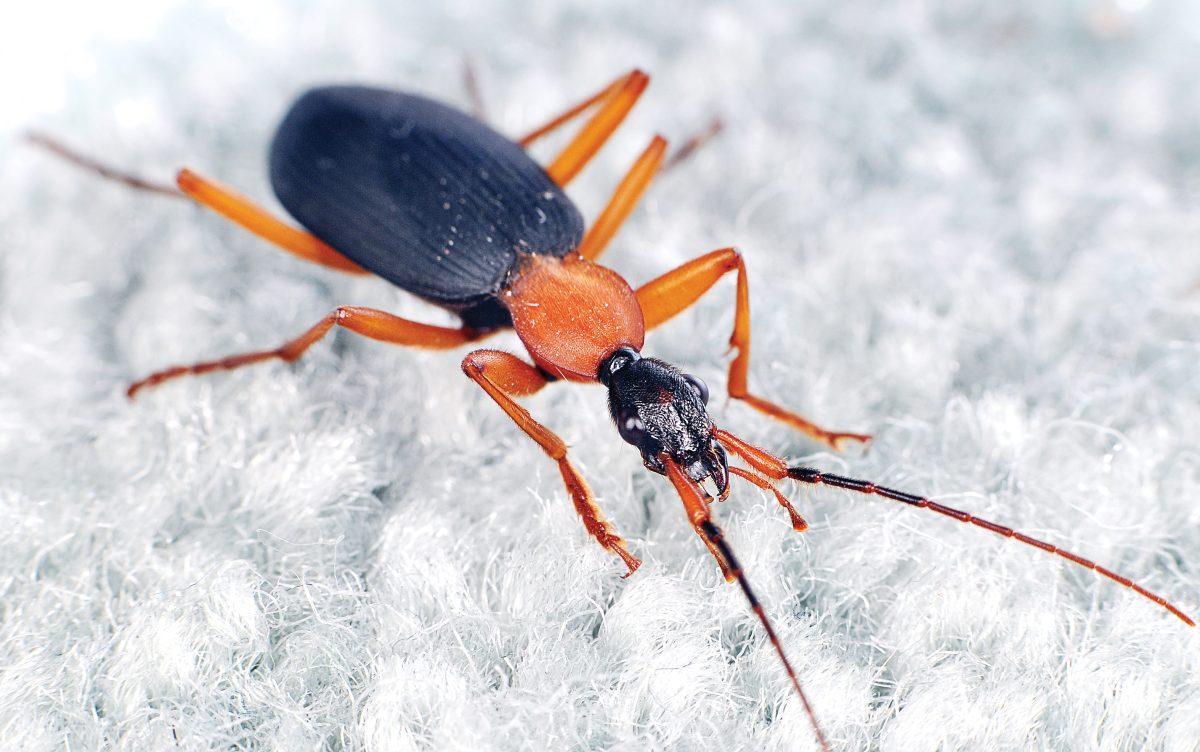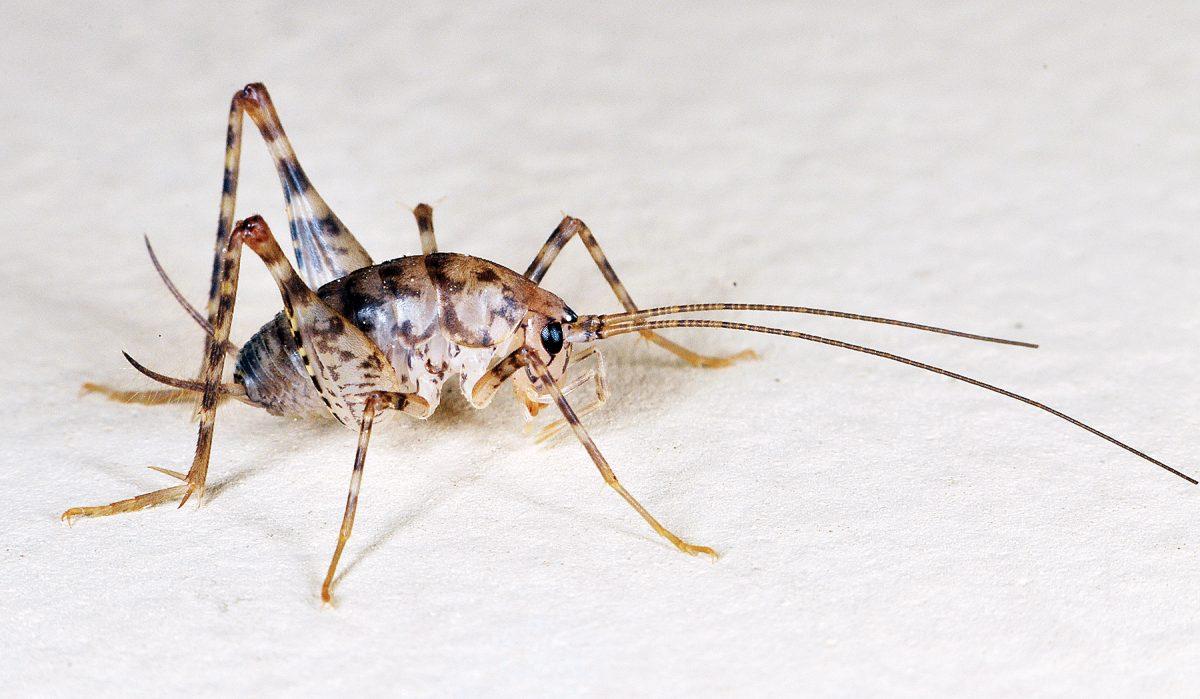Dogs and cats are not the only creatures living in our homes. Although humans have always coexisted with arthropods, there’s more than meets the eye. If you’ve been looking for hundreds of new roommates, search no more. But don’t fear — these creatures won’t bug you.
In the recent study published on Jan. 19, researchers sampled 50 freestanding homes in and around Raleigh for arthropods. The team surveyed room by room, gathering every specimen it could find into vials, dead or alive.
More than 10,000 specimens were found, and about 579 morphospecies were identified. The study, published in the journal PeerJ, is unparalleled, as prior indoor studies have focused on individual species.
“To some degree, houses are like new and relatively unexplored ecosystems,” said Michelle Trautwein, co-author and entomologist at the California Academy of Sciences. “Humans have only been building houses for 20,000 years, so when we hear arthropod diversity, we generally think of it being on the outside and not on the inside. This was the first study of its kind.”
Researchers at NC State, the California Academy of Sciences and the North Carolina Museum of Natural Sciences completed the study.
“We’d set up a central station in people’s home with vials of alcohol,” said Matthew Bertone, co-author and entomologist with the NC State Plant Disease and Insect Clinic. “Using labels and special pens, we’d write down the room’s characteristics and collect them in the vials, which preserved the insects and arthropods.”
Other tools included headlamps, flashlights and aspirators, which are vacuum-like devices. Nets were used to capture airborne arthropods. Additionally, kneepads proved to be crucial for arthropod hunting.
“We were crawling around a lot in homes and learned quickly that we needed kneepads,” Bertone said.
Afterward, the arthropods were brought to the North Carolina Museum of Natural Sciences downtown for sorting and identification. According to Bertone, there was a healthy population of arthropods that adopt our homes as their own. Nevertheless, Bertone said many that had innocently wandered indoors didn’t survive.
“Houses, to some degree, are these incredible bug magnets,” Trautwein said. “They attract a lot of different creatures from outside. A lot of them come in, don’t have a food source and die on your windowsill. The core group of arthropods that are living and thriving inside houses is much smaller.”
The study found that the majority of the arthropods were under a centimeter long. Among the largest were house centipedes, smoky brown cockroaches and camel crickets.
“These creatures are small and tend to hide,” Bertone said. “The fact that people were surprised by how much we collected goes to show that people don’t interact with these arthropods that much.”
The most common species was the cobweb spider, which was found in every home and in 65 percent of rooms, according to Bertone. Carpet beetles came in a close second. Other popular insects included booklice, which are attracted to humid areas and food products, and dark-winged fungus gnats, which breed in plant pots.
“Although we got a lot of specimens, there wasn’t a lot of biomass,” Bertone said. “We’re talking about half a shot glass full of arthropods in your entire home.”
Ironically, one of the most surprising aspects of the study was the infrequency of pests.
“So much of urban entomology is focused on pest species; I think we assumed that we’d find more,” Trautwein said.
The majority of pests found were food product pests, such as Indian mealmoths, carpet beetles and booklice. Although bedbugs are common to the area, none were found.
“But, that’s considering the fact the homes were volunteered,” Bertone said. “If we had sampled apartments, we might have found more. Apparently, we’re one of the top areas in the U.S. for bedbugs.”
According to Trautwein, rare arthropods were found in homes that are normally difficult to encounter, even when searching out in nature.
“One of my favorites was the spitting spiders we found in five of the homes,” Bertone said.
When on the prowl, these spiders spit venomous silk to debilitate their victims.
“We have some native ones in the U.S., but the type we found in the homes are actually from Europe,” Bertone said. “They’ve traveled with humans around the globe.”
Bertone said the spitting spiders fascinated him so much that he ended up keeping a few.
“I kept an adult one that ended up having eggs and even a baby one,” Bertone said. “I think they’re interesting, so it was nice to keep them to just observe.”
Other nomadic creatures originated from areas such as South America and the Mediterranean. However, many were from North America; most of the arthropods that had perished indoors were local.
“The amount of specimens we collected was a bit surprising,” Bertone said. “I didn’t think we’d find over 10,000. We sampled 554 rooms, and in only five of those rooms we couldn’t find a single specimen.”
In future studies with the data set, correlations will be explored next, according to Bertone.
“We’d like to know more about them [anthropods], and how they evolved to live with us and whether they have any good or bad microbes on them or in them specific to these types,” Bertone said. “As far as we know, most of them are fairly neutral to the home. They’re not well noticed by people and aren’t bothering them.”
Trautwein said she hopes to inspire people to think of their homes in a different way.
“People freak out hearing that there are so many arthropods in their houses,” Trautwein said. “There’s this rich species diversity all around us that you don’t have to go to the vast wilderness to be surrounded by. There’s an incredible diversity living in your own backyard and inside your own house.”
To read the article, visit: https://peerj.com/articles/1582/
A recent study found that ground beetles are one of the many creatures hiding within your home. More than 10,000 specimens were found, and about 579 morphospecies were identified in the study conducted by NC State, the California Academy of Sciences and the North Carolina Museum of Natural Sciences.









